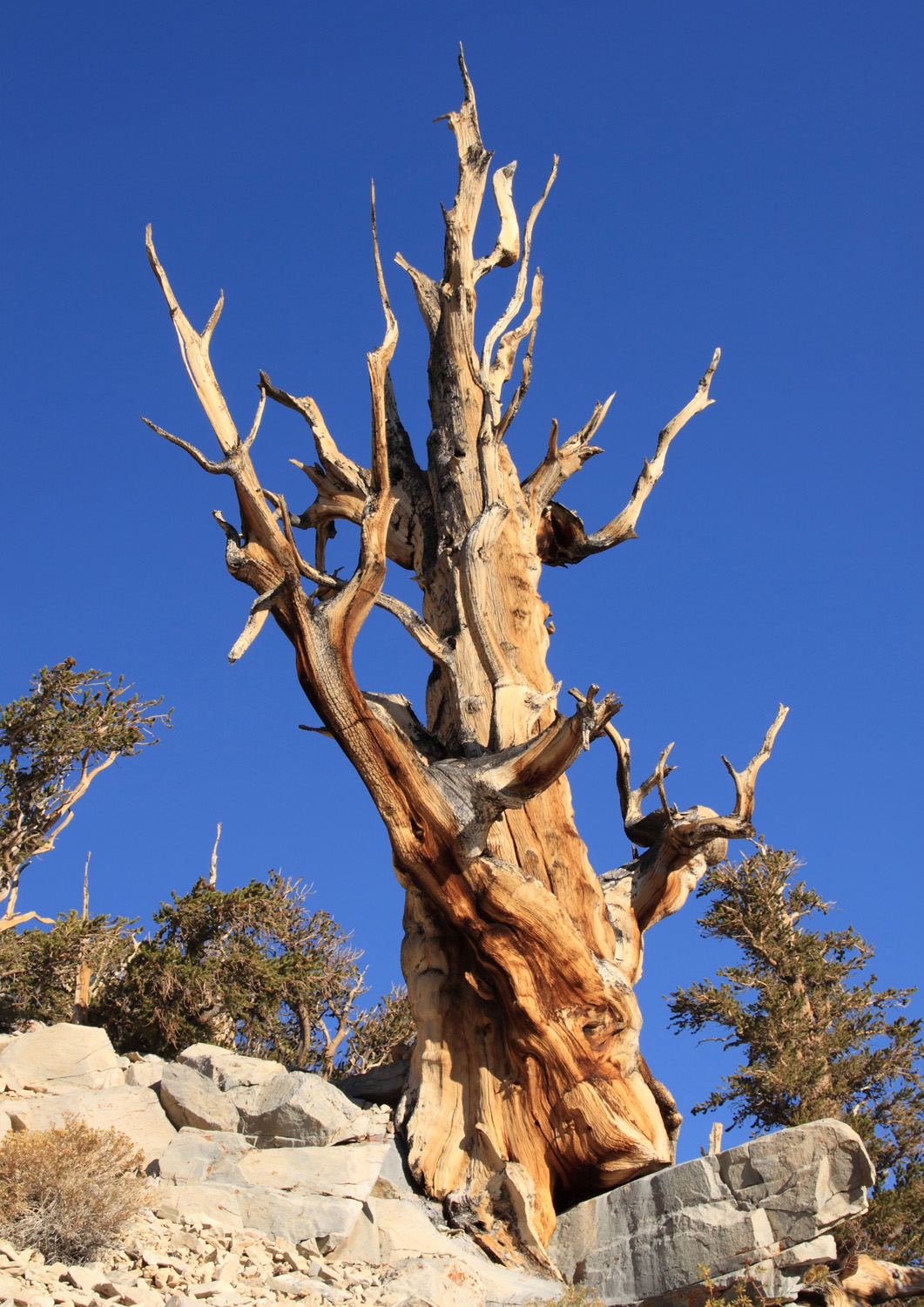Bristlecone pine is an evergreen tree that grows at high altitudes in the Western United States. There are two species of bristlecone pines. One species, the Great Basin bristlecone pine, lives longer than any other kind of tree. These trees are found in California, Nevada, and Utah. Some Great Basin bristlecone pines are more than 4,000 years old. One of the oldest known living trees is a Great Basin bristlecone pine in the White Mountains of eastern California. This tree, named Methuselah, is more than 4,600 years old. The second species of bristlecone pine, the Rocky Mountain bristlecone pine, grows in Arizona, Colorado, and New Mexico. These trees live up to 2,000 years.

Some bristlecone pines grow as tall as 70 feet (21 meters). Others are merely twisted shrubs. Young trees have smooth, thin, light-gray bark. Old ones have grooved, thick, reddish-brown bark. The name bristlecone comes from the prickles on the tree’s pine cones.

Bristlecone pines live an extremely long time chiefly because they grow slowly and live in cool, dry areas that have few harmful insects and diseases. Also, a bristlecone pine can survive even if all but a few of its branches and roots die. In most of the ancient trees, a thin strip of living bark connects the roots with the few live branches remaining on the tree. In addition, bristlecone pine needles remain on the tree from 15 to 30 years. The long life of the needles enables the tree to survive many successive years of drought or extreme cold, when few new needles can grow.
Because bristlecone pines live so long, they can be used to learn about past climates. A living pine tree makes a ring of new wood every year. The ring’s thickness depends on the temperature and the amount of rainfall. By measuring the rings in wood from very old bristlecone pines, scientists can determine what the climate was like three or four thousand years ago.
